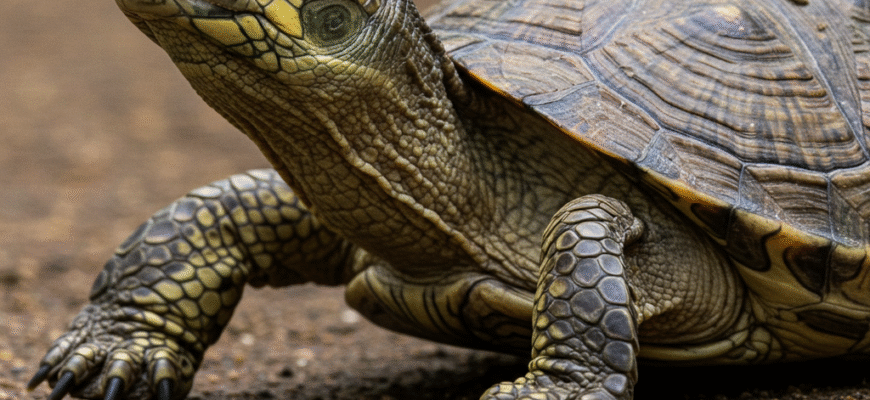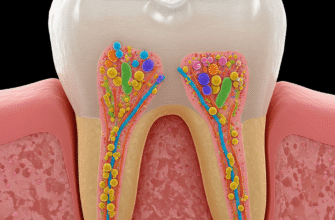Ever found yourself pondering the curious case of the turtle’s mouth? While many of their reptilian cousins sport impressive arrays of teeth, turtles, along with a few other unique reptiles, navigate the world with a distinct, often sharp, beak. This isn’t just a quirky fashion statement from Mother Nature; it’s a sophisticated adaptation honed over millions of years. The journey from a toothy grin to a keratinous clipper is a fascinating story of evolution, diet, and the diverse pressures of survival.
Understanding the Reptilian Beak
So, what exactly is this reptilian beak? It’s not quite like the beak of a bird, though there are similarities in material and function. In turtles, the structure is scientifically termed a
rhamphotheca. This is a tough, keratinous sheath that covers the bones of the upper and lower jaw. Think of keratin as nature’s versatile building block – it’s the same protein that makes up human fingernails and hair, bird feathers, and animal horns. Beneath this horny layer lie the actual jawbones, which provide the structural support and power for the bite.
Unlike teeth, which are individual, rooted structures made of dentine and enamel, a turtle’s beak is a continuous, sharp-edged surface. It grows constantly from the base, much like our fingernails, and is naturally worn down and sharpened through use. This continuous regeneration means turtles don’t have to worry about cavities, broken teeth, or the dental bills that might come with them!
An Evolutionary Tale: From Teeth to Beaks
It might surprise you to learn that the ancient ancestors of modern turtles weren’t always beak-bearers. The fossil record paints a clear picture of early turtle-like reptiles that possessed a full set of teeth. So, what prompted this significant evolutionary shift?
The Fossil Record’s Clues
Paleontologists have unearthed fascinating transitional fossils. For instance,
Pappochelys, an early stem-turtle from about 240 million years ago, had teeth in its palate but already showed signs of a developing beak on its jaw margins. Later, species like
Odontochelys semitestacea, one of the oldest known turtles from around 220 million years ago, had teeth in both its upper and lower jaws but also displayed features pointing towards beak evolution. It wasn’t until more derived turtle lineages appeared that teeth were completely lost, replaced by the fully formed rhamphotheca we see today.
This gradual loss suggests that the development of a beak was not a sudden event but a slow, adaptive process. The evolutionary path to toothlessness, or edentulism, has occurred independently multiple times across different animal groups, indicating it can offer significant advantages under certain environmental or dietary conditions.
Why Lose Teeth?
Several theories attempt to explain why turtles (and birds, for that matter, which are also descended from toothed reptilian ancestors) opted for beaks. One compelling idea relates to
dietary specialization. As ancestral turtles diversified, their diets likely shifted. A beak can be incredibly versatile: sharp edges for slicing through tough plant matter for herbivores, or powerful, crushing surfaces for species consuming hard-shelled prey like mollusks or crustaceans.
Another hypothesis involves
weight reduction. Teeth, especially a full set, can add considerable weight to the skull. For aquatic turtles, a lighter head might have improved buoyancy control and maneuverability in water. While less critical for terrestrial turtles, the developmental simplicity and continuous renewal of a beak might have outweighed the benefits of teeth for their particular lifestyles.
The development of a strong, protective shell in turtles might also have played a role. With such an effective defense mechanism, perhaps the need for teeth as offensive or defensive weapons diminished, paving the way for a more specialized feeding apparatus like the beak.
The Beak’s Edge: Advantages in the Reptilian World
The persistence of beaks in turtles for over 200 million years speaks volumes about their effectiveness. This structure offers a suite of benefits that have allowed turtles to thrive in diverse environments, from oceans and rivers to forests and deserts.
The shape and strength of a turtle’s beak are often finely tuned to its specific diet. This is a fantastic example of adaptive radiation:
- Herbivorous turtles, like many tortoises and green sea turtles, typically have broad, serrated beaks. These act like shears, perfect for cropping and slicing tough grasses, leaves, algae, and seagrass. The Green Sea Turtle’s beak, for example, has finely serrated edges ideal for grazing on marine vegetation.
- Carnivorous turtles, such as snapping turtles or softshell turtles, often possess sharp, pointed, and powerful beaks. The Alligator Snapping Turtle has a formidable, hooked beak capable of delivering a devastating bite to fish, amphibians, and even other turtles. Softshell turtles have long necks and sharp beaks to snatch quick-moving aquatic prey.
- Omnivorous turtles, which eat a mix of plant and animal matter, might have beaks that combine features – moderately sharp for gripping but also robust enough for some crushing.
This dietary adaptability, facilitated by the beak, is a key reason for their long-term evolutionary success.
Built to Last: Durability and Low Maintenance
Imagine the dental problems if turtles had teeth like ours! Constantly biting into hard shells, tough plants, or struggling prey would inevitably lead to wear, breakage, and potential infections. A beak, however, offers a more robust solution. As mentioned, it’s made of keratin, which grows continuously. The very act of eating helps to wear it down and maintain a sharp, functional edge. This self-sharpening, self-repairing system is incredibly efficient. There’s no need for a turtle dentist, as the beak essentially takes care of itself. This resilience is a significant advantage, ensuring the turtle can always feed effectively throughout its long life.
Lightening the Load
While perhaps more critical for birds in the context of flight, a lighter skull is also beneficial for aquatic turtles. Reducing the weight at the front end can improve agility and reduce the energy expenditure needed to hold the head up or move it quickly through water. Every little bit of energy saved is an evolutionary plus.
More Than Just a Mouth
Beyond feeding, a turtle’s beak can serve other purposes. Some species use their strong beaks to help dig nests for their eggs. In aggressive encounters or when threatened by predators, a powerful beak can be a formidable defensive weapon, capable of inflicting a painful bite. It’s a true multi-tool, honed by necessity.
The keratinous beak of a turtle, known as a rhamphotheca, is not a static structure. It grows continuously from its base, and the outer layers are constantly worn away by feeding and other activities. This process of growth and wear means the beak is essentially self-sharpening and can even repair minor damage over time, a remarkable adaptation that ensures a lifetime of effective use without the vulnerabilities associated with individual teeth.
So, Why Do Other Reptiles Keep Their Pearly Whites?
If beaks are so great, why haven’t all reptiles ditched their teeth? The answer lies in the beautiful complexity of evolution: there’s rarely a one-size-fits-all solution. Teeth are incredibly effective for many reptilian lifestyles. Crocodilians, for instance, have powerful jaws lined with numerous sharp, conical teeth, perfectly designed for seizing and holding large, struggling prey. These teeth are constantly replaced throughout their lives, mitigating issues of wear and loss.
Snakes showcase an astonishing diversity of dental adaptations. From the backward-curving teeth that prevent prey from escaping to the highly specialized fangs of venomous snakes designed for injecting toxins, teeth are integral to their survival strategies. Many lizards, too, rely on their teeth for gripping insects, tearing flesh, or crushing hard-bodied invertebrates. For these groups, their existing dental arrangements are highly successful for their ecological niches. Evolution tends to favor what works, and for many reptiles, teeth work exceptionally well.
The Intricacies of Beak Design
Not all turtle beaks are created equal. The precise shape, sharpness, and power vary dramatically between species, reflecting their ecological roles. The outer layer of keratin, the rhamphotheca, covers the underlying premaxilla, maxilla (upper jaw), and dentary (lower jaw) bones. The edges of these sheaths are known as
tomia. These tomia can be razor-sharp, as seen in many carnivorous and herbivorous turtles, allowing for efficient slicing.
Some turtles have developed additional modifications. For example, some species have cusps or tooth-like projections on their beaks, not made of true tooth material but rather of hardened keratin, which aid in gripping or processing food. The Loggerhead Sea Turtle has an incredibly powerful beak designed for crushing the hard shells of crabs, conchs, and whelks. The subtle (and sometimes not-so-subtle) variations in beak morphology are a testament to the adaptive power of natural selection, shaping this tool to meet the specific challenges of each species’ environment and diet.
In conclusion, the development of a beak in turtles and a few other reptilian lines is a remarkable example of evolutionary innovation. It represents a departure from the ancestral toothy condition, driven by pressures related to diet, lifestyle, and perhaps even structural efficiency. This keratinous multi-tool has allowed turtles to exploit a vast range of food sources, reduce skull weight, and possess a durable, low-maintenance feeding apparatus. While teeth serve other reptiles perfectly well, the beak stands as a testament to nature’s ingenuity, providing a highly successful alternative that has helped these ancient creatures endure for hundreds of millions of years.









